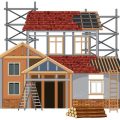1. Understanding the Airbnb Market Landscape
Before jumping into the Airbnb business, it’s essential to understand how the market works and what drives profitability in different areas across the U.S. As a real estate investor, doing your homework upfront can make a huge difference in your success. Let’s break down the key elements you need to know when exploring the Airbnb market landscape.
Explore Current Airbnb Trends
The short-term rental market has evolved rapidly in recent years. With remote work becoming more common, many travelers are looking for unique stays in suburban and rural areas—not just major cities. There’s also a growing interest in longer stays, pet-friendly properties, and amenities like fast Wi-Fi and dedicated workspaces. Keeping an eye on these trends can help you tailor your property to meet current guest expectations.
Know Your Target Audience
Understanding who your potential guests are is crucial for setting up a profitable Airbnb. Are you targeting business travelers, vacationing families, digital nomads, or couples looking for weekend getaways? Each group has different needs and expectations. Here’s a quick breakdown of common guest types and what they’re usually looking for:
| Guest Type | What They Look For |
|---|---|
| Business Travelers | High-speed internet, proximity to downtown or convention centers, self check-in |
| Vacationing Families | Multiple bedrooms, kitchen facilities, nearby attractions |
| Digital Nomads | Quiet space, long-term stay discounts, office desk setup |
| Couples/Weekend Getaways | Romantic ambiance, privacy, local experiences |
Analyze Market Demand by Location
The location of your Airbnb property plays a big role in its success. Not every city or neighborhood has the same demand for short-term rentals. Use tools like AirDNA, Mashvisor, or Airbnb’s own insights to research occupancy rates, average daily rates (ADR), and seasonal trends in various U.S. markets.
Top U.S. Cities for Airbnb Investment (2024)
| City | Average Daily Rate (ADR) | Occupancy Rate | Notes |
|---|---|---|---|
| Nashville, TN | $200+ | 70%+ | Popular for music events and tourism year-round |
| Phoenix, AZ | $150–$180 | 65% | Mild winters attract snowbirds and golfers |
| Austin, TX | $180+ | 75% | Strong demand during festivals like SXSW and ACL |
| Savannah, GA | $160–$190 | 70%+ | Historic charm draws weekend travelers consistently |
| Boulder, CO | $200+ | 68% | Appeals to outdoor lovers and remote workers alike |
Pro Tip:
Aim for locations that balance strong tourist appeal with lenient short-term rental regulations. Always check local laws and HOA rules before buying a property intended for Airbnb use.
Diversify Your Strategy Based on Seasonality & Events
Certain cities have peak seasons that drive higher profits—like ski towns in winter or beach destinations in summer. Others benefit from major annual events or festivals. Aligning your investment with these cycles can boost your income dramatically.
The better you understand the local demand patterns and what travelers want in that area, the easier it is to choose the right property—and turn it into a highly profitable Airbnb listing.
2. Finding and Acquiring the Right Property
Before you can launch a successful Airbnb business, you need to find the right property—one that not only attracts guests but also complies with local regulations and offers solid returns. Here’s how to identify profitable opportunities and make smart investment decisions.
Understand Local Zoning and Short-Term Rental Regulations
Different cities and counties across the U.S. have varying laws regarding short-term rentals. Some areas allow them freely, while others require permits or ban them altogether. Before purchasing a property:
- Check with your local city or county government website for short-term rental laws.
- Look for any HOA (Homeowners Association) restrictions if buying in a managed community.
- Confirm if there are limits on how many days per year a property can be rented out.
Identify High-Demand Locations
The key to Airbnb success is location. Look for areas where tourists, business travelers, or event-goers frequently visit. Consider these types of locations:
| Location Type | Description |
|---|---|
| Urban Centers | Cities with strong tourism, nightlife, or business hubs (e.g., New York City, Los Angeles). |
| College Towns | Demand from visiting families, faculty, or prospective students. |
| Ski Resorts & Beaches | Year-round vacation traffic depending on season. |
| National Parks & Outdoor Areas | Attracts nature lovers and adventurers. |
Evaluate ROI Before You Buy
You’re not just buying a home—you’re making an investment. Use this basic formula to estimate your return on investment (ROI):
Total ROI Formula:
(Annual Net Income / Total Investment Cost) × 100 = ROI%
Your Annual Net Income = Projected Annual Revenue – Operating Expenses
- Total Investment Cost: Includes purchase price, closing costs, initial furnishing, and renovation expenses.
- Operating Expenses: Includes mortgage payments, utilities, maintenance, property management fees (if applicable), taxes, and Airbnb service fees.
Avoid Common Pitfalls When Choosing a Property
Selecting the wrong property can drain your budget and lead to regulatory headaches. Watch out for:
- No Short-Term Rental Permit Available: Even great properties can’t be rented if permits aren’t allowed.
- Poor Accessibility: Remote properties may have fewer bookings unless they offer something unique.
- Noisy Neighbors or Unsafe Areas: This can lead to bad reviews and low occupancy rates.
Your Next Steps
Narrow down your target cities or neighborhoods by researching demand, legality, and ROI potential. Once you find an area that checks all the boxes, start touring properties with an investor’s mindset—think about layout efficiency, guest appeal, parking availability, and ease of maintenance.
A great Airbnb starts with a smart real estate choice. Do your homework upfront so your property becomes a long-term income-generating asset.
![]()
3. Designing and Furnishing for Maximum Appeal
One of the key elements of running a successful Airbnb business is creating a space that not only looks great in photos but also delivers a comfortable and memorable guest experience. A well-designed and thoughtfully furnished property can help you attract more bookings, earn better reviews, and charge higher nightly rates—all while keeping your budget in check.
Understand Your Target Guest
Before you start decorating, think about who your ideal guests are. Are you targeting business travelers, families, couples, or vacationers? Your design choices should reflect their needs and expectations. For example:
| Guest Type | Design Priorities |
|---|---|
| Business Travelers | Desk space, strong Wi-Fi, neutral colors |
| Families | Extra beds, child-friendly furniture, durable materials |
| Couples | Cozy ambiance, romantic lighting, luxurious bedding |
| Vacationers | Themed decor, local art, Instagram-worthy corners |
Create a Strong First Impression
Your listing photos are the first thing potential guests see. Make sure your space stands out with these tips:
- Cohesive Color Palette: Stick to 2–3 complementary colors to create a harmonious look.
- Avoid Clutter: Keep it clean and minimal. Too many decorations can overwhelm the space.
- Add Personality: Use local artwork or unique furniture pieces to give your rental character.
- Pops of Color: Add colorful throw pillows or wall art for visual interest in photos.
Select Furniture That Balances Comfort and Durability
You don’t need to spend a fortune to furnish your Airbnb. Look for budget-friendly pieces that offer both style and function. Heres how to choose smartly:
| Furniture Item | What to Look For |
|---|---|
| Sofa | Darker fabrics, washable covers, mid-century modern or contemporary styles |
| Beds & Mattresses | Queen-size minimum, medium-firm comfort level, easy-to-clean frames |
| Dinning Table & Chairs | Sized for group capacity, scratch-resistant surface, neutral tones |
| Lamps & Lighting | Dimmable lights for ambiance; layered lighting (overhead + task) |
Add Thoughtful Amenities That Guests Appreciate
The little extras go a long way in making your Airbnb stand out. Consider including:
- Coffee station with coffee maker, mugs, and pods or grounds
- Towels and linens in hotel-style white (easy to bleach and clean)
- A guidebook with local recommendations (restaurants, attractions)
- Scented candles or essential oil diffusers for a welcoming vibe
- Baskets or bins for storage and organization throughout the space
Simplify with Smart Design Hacks
If youre on a tight budget or want quick upgrades, try these cost-effective design hacks:
- IKEA Hacks: Customize basic furniture pieces with paint or new hardware for a high-end look.
- Pillows & Throws: Rotate seasonal textiles to refresh your décor without big changes.
- Peel-and-Stick Wallpaper: Add accent walls easily without damaging surfaces.
- No-Drill Shelves: Create extra storage without permanent modifications.
- Mood Lighting: Use string lights or LED strips for ambiance on a budget.
Your Design Should Tell a Story
Your Airbnb shouldn’t feel like just another generic rental—it should tell a story. Whether it’s inspired by local culture, modern minimalism, or rustic charm, your design theme should be consistent throughout the property. This not only helps with branding but also enhances the guest experience from booking to checkout.
A beautiful yet functional space is one of the best investments you can make as an Airbnb host. By designing with purpose and furnishing smartly, you’ll set yourself up for higher occupancy rates—and happier guests.
4. Setting Up and Optimizing Your Airbnb Listing
Once youve secured your property and completed any necessary renovations or furnishing, its time to create a powerful Airbnb listing that grabs attention and converts views into bookings. A well-optimized listing can significantly boost your visibility and income. Heres how to do it step by step.
Write a Compelling Title and Description
Your listing title is the first thing potential guests will see, so make it count. Use descriptive and appealing language that highlights your propertys best features. In the description, clearly explain what makes your space unique, who it’s perfect for, and what amenities are included.
Tips for Writing a Great Title:
- Include keywords like “Downtown,” “Cozy,” “Spacious,” or “Pet-Friendly”
- Mention standout features (e.g., “with Rooftop View” or “Steps from the Beach”)
- Keep it under 50 characters if possible for mobile readability
Example:
Title: Modern Loft in Downtown Austin w/ Free Parking
Description: Enjoy this bright and stylish one-bedroom loft located in the heart of Austin. Walk to local cafes, live music venues, and more. Includes high-speed Wi-Fi, fully stocked kitchen, washer/dryer, and free parking.
Take Professional Photos
Photos are one of the most important parts of your listing. High-quality images can make your space look more inviting and trustworthy. If possible, hire a professional photographer who specializes in real estate or short-term rentals.
Photo Checklist:
| Room/Area | What to Include |
|---|---|
| Living Room | Sofa, lighting, TV setup, décor details |
| Kitchen | Appliances, cookware, dining area |
| Bedroom(s) | Beds made with fresh linens, nightstands, closet/storage space |
| Bathroom(s) | Towels, toiletries display, clean surfaces |
| Outdoor Area (if any) | Patio furniture, view shots, grill or firepit |
Set Competitive Pricing
Your pricing strategy can make or break your Airbnb business. Research similar listings in your area to determine a competitive nightly rate. Consider using Airbnb’s Smart Pricing tool to automatically adjust rates based on demand.
Pricing Strategy Tips:
- Weekday vs Weekend Rates: Adjust prices based on travel trends in your city.
- Seasonal Adjustments: Increase prices during holidays or events.
- Discounts: Offer weekly/monthly discounts for longer stays.
Use SEO Tactics for Better Visibility
A well-optimized listing helps you rank higher in Airbnb search results. Here are some basic SEO tactics you can apply directly within your listing:
- Use Keywords: Include relevant keywords like “family-friendly,” “close to airport,” or “downtown apartment.”
- Avoid Keyword Stuffing: Make sure descriptions sound natural while still incorporating key terms.
- Add Tags and Amenities: Check every box that applies—WiFi, air conditioning, workspace—which helps when guests use filters.
- Respond Quickly: Fast response times improve your ranking in search results.
A strong Airbnb listing combines great writing, professional photos, smart pricing strategies, and effective SEO techniques. By optimizing each element of your listing, youll increase visibility—and ultimately—your bookings.
5. Managing Operations and Guest Experience
Running a profitable Airbnb business isnt just about listing your property — its about creating a smooth operation and memorable guest experiences that lead to glowing 5-star reviews. Here’s how you can manage the day-to-day tasks efficiently while keeping your guests happy.
Automate Your Check-In Process
Self check-in is now expected by many travelers. Automating this process saves time and gives guests flexibility, especially if they arrive late at night.
Popular Self Check-In Options:
| Method | Description |
|---|---|
| Smart Locks | Allow guests to enter using a unique code; integrates with apps like August or Schlage. |
| Lockboxes | A simple solution where you place the key in a secure box with a code. |
| Keyless Entry Systems | Wi-Fi or Bluetooth-enabled systems that can be managed remotely. |
Simplify Cleaning Schedules
A clean property is non-negotiable for 5-star reviews. Creating a reliable and automated cleaning routine ensures consistency and saves time.
Tips to Manage Cleaning Efficiently:
- Create a cleaning checklist for each turnover to ensure nothing gets missed.
- Use tools like TurnoverBnB or Properly to sync bookings with your cleaners’ schedules.
- Hire professional cleaning services familiar with short-term rental standards.
Streamline Guest Communication
Treat communication like customer service — quick, friendly responses make guests feel valued and reduce confusion or complaints.
Best Practices:
- Create message templates for check-in instructions, house rules, and checkout reminders.
- Use Airbnbs scheduled messaging feature or apps like Hospitable (formerly Smartbnb) for automation.
- Add a personal touch — greet guests by name and offer local tips based on their interests.
Create an Exceptional Guest Experience
The little things matter. Thoughtful touches and attention to detail often turn an average stay into a memorable one that earns 5-star reviews.
Amenities That Impress Guests:
| Amenity | Description |
|---|---|
| Coffee & Snacks | A small welcome basket with coffee pods, snacks, or bottled water goes a long way. |
| Fast Wi-Fi | A must-have for remote workers, streamers, and families alike. |
| Towels & Toiletries | Crisp linens, extra towels, shampoo, conditioner, and body wash are expected basics. |
| User Manual | A printed or digital guide that explains how to use appliances, Wi-Fi info, and house rules. |
Loyalty Tip:
If guests leave great reviews, consider offering them a discount on their next stay. Repeat customers are easier to host and more likely to recommend your place to friends.
The secret to long-term success with Airbnb is combining automation with genuine hospitality. When operations run smoothly behind the scenes and guests feel taken care of, your rental becomes more than just a place to sleep — it becomes part of their travel story.
6. Legal Considerations and Scaling Your Business
Before you grow your Airbnb business, its essential to understand the legal and regulatory landscape. Each city and state in the U.S. has its own rules when it comes to short-term rentals. Ignoring these can lead to fines, penalties, or even being banned from hosting.
Legal Issues to Watch Out For
Here are some common legal areas you need to be aware of before listing your property:
| Legal Area | Description |
|---|---|
| Zoning Laws | Check if your property is in a zone that allows short-term rentals. |
| HOA Rules | If youre part of a homeowners association, make sure they allow Airbnbs. |
| Licensing & Permits | You may need a business license or short-term rental permit depending on your city. |
| Local Taxes | You might be required to collect and remit occupancy taxes just like hotels do. |
Tax Implications
Running an Airbnb is considered a business, so tax rules apply. Heres a quick overview of what you should consider:
- Income Reporting: All rental income must be reported on your federal tax return.
- Deductions: You can write off expenses like cleaning fees, maintenance, utilities, mortgage interest, and depreciation.
- Self-Employment Tax: If youre actively managing multiple properties, this could apply to you.
A good idea is to work with a CPA who understands real estate and short-term rental businesses.
Safety Regulations
Your guests’ safety is not just important—it’s legally required in many areas. These are standard safety requirements for most Airbnb rentals:
- Smoke and Carbon Monoxide Detectors: Must-have in every unit.
- Fire Extinguishers: Place them in easily accessible locations.
- Emergency Exits: Clearly mark them and include instructions in your house manual.
Strategies for Scaling Your Airbnb Business
If you’ve successfully managed one property and want to grow, here are some practical ways to scale up:
Add More Units Strategically
Select new properties in high-demand markets with favorable short-term rental laws. Use data tools like AirDNA or Mashvisor to analyze potential ROI before buying or leasing another unit.
Create a Standard Operating Procedure (SOP)
This includes everything from guest communication templates to cleaning checklists. SOPs help you delegate tasks more easily as you grow.
Hire Help
- Cohosts: Manage guest relations when youre not available.
- Cleansing Teams: Essential for maintaining quality between bookings.
- Pricing Tools: Use software like PriceLabs or Beyond Pricing to maximize profits automatically.
Build a Brand
Create consistent design themes across all your units. Consider giving your Airbnb business a name and logo. This helps build customer loyalty and attract repeat guests.


